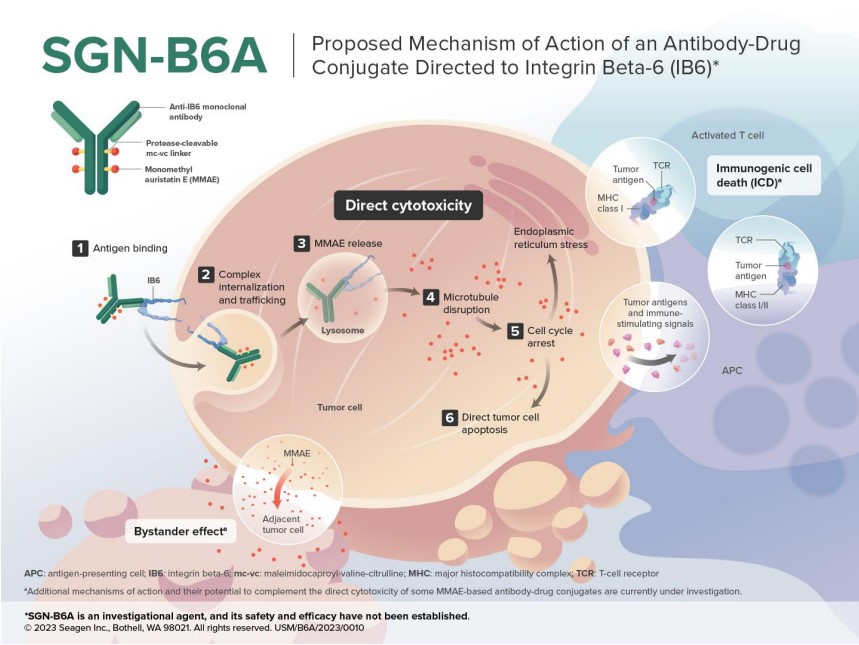Sigvotatug vedotin
Sigvotatug vedotin (SGN-B6A) is an investigational compound. Its safety and efficacy have not been established
Overview + Rationale
- Sigvotatug vedotin (SGN-B6A) is an investigational antibody-drug conjugate composed of 3 components: a monoclonal antibody directed to IB6 (integrin beta-6), a microtubule-disrupting agent MMAE (monomethyl auristatin E), and a protease-cleavable mc-vc (maleimidocaproyl-valine citrulline) linker that covalently attaches MMAE to the antibody, which enables preferential release of MMAE within target cells1
- IB6 is a cell surface receptor that promotes cellular adhesion through interactions with the extracellular matrix, which plays a major role in solid tumor pathogenesis and invasiveness2,3
- IB6 expression is normally low but is highly upregulated during pathogenesis4-6
- IB6 is expressed in numerous solid tumors including non-small cell lung cancer, head and neck squamous cell carcinoma, esophageal cancer, and cutaneous squamous cell carcinoma1,7-9
- IB6 is a proposed negative prognostic marker based on multiple analyses9,10
Mechanism of Action
Sigvotatug vedotin (SGN-B6A) is thought to induce tumor cell death through:
• Preferential release of monomethyl auristatin E within target cells and subsequent apoptosis1
• Bystander effect11
• Induction of immunogenic cell death12,13

Stage of Development
Advanced Solid Tumors
Phase 1 Monotherapy
Non-Small Cell Lung Cancer (NSCLC)
Phase 3 Monotherapy

 Back
Back
